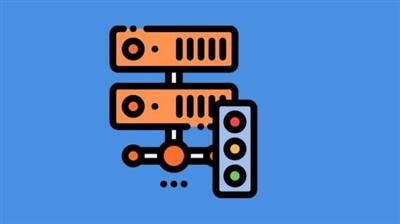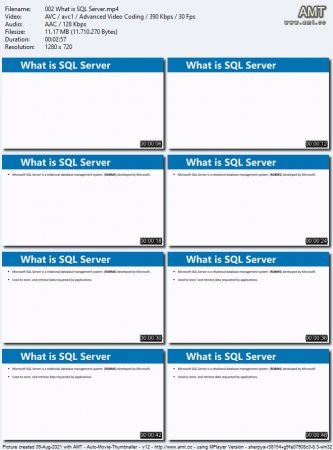MP4 | Video: h264, 1280x720 | Audio: AAC, 44.1 KHz, 2 Ch
Genre: eLearning | Language: English + srt | Duration: 21 lectures (1h 55m) | Size: 646.9 MB
Learn how to execute built-in functions on SQL databases.
What you'll learn:
Setup SQL Server
Execute CAST Function on SQL Database Server
Execute CONVERT Function on SQL Database Server
Execute SUBSTRING Function on SQL Database Server
Execute RANK Functions on SQL Database Server
Execute Aggregate Functions on SQL Database Server
Requirements
Computer with internet access required.
Description
There are various types of functions that can be performed on a Microsoft SQL Database Server. This course will cover a few of them.
Aggregate functions
Aggregate functions perform a calculation on a set of values and return a single value. They are allowed in the select list or the HAVING clause of a SELECT statement. You can use an aggregation in combination with the GROUP BY clause to calculate the aggregation on categories of rows. Use the OVER clause to calculate the aggregation on a specific range of value. The OVER clause cannot follow the GROUPING or GROUPING_ID aggregations.
All aggregate functions are deterministic, which means they always return the same value when they run on the same input values.
Ranking functions
Ranking functions return a ranking value for each row in a partition. Depending on the function that is used, some rows might receive the same value as other rows. Ranking functions are nondeterministic.
CAST function converts an expression from one datatype to another datatype. If the conversion fails, the function will return an error. Otherwise, it will return the converted value.
CONVERT function converts an expression from one datatype to another datatype. If the conversion fails, the function will return an error. Otherwise, it will return the converted value
The SUBSTRING() extracts a substring with a specified length starting from a location in an input string
Who this course is for
Beginners to Database Administration
Beginners to Database Development
Homepage
https://www.udemy.com/course/microso...ver-functions/
Screenshots
DOWNLOAD






 Reply With Quote
Reply With Quote
